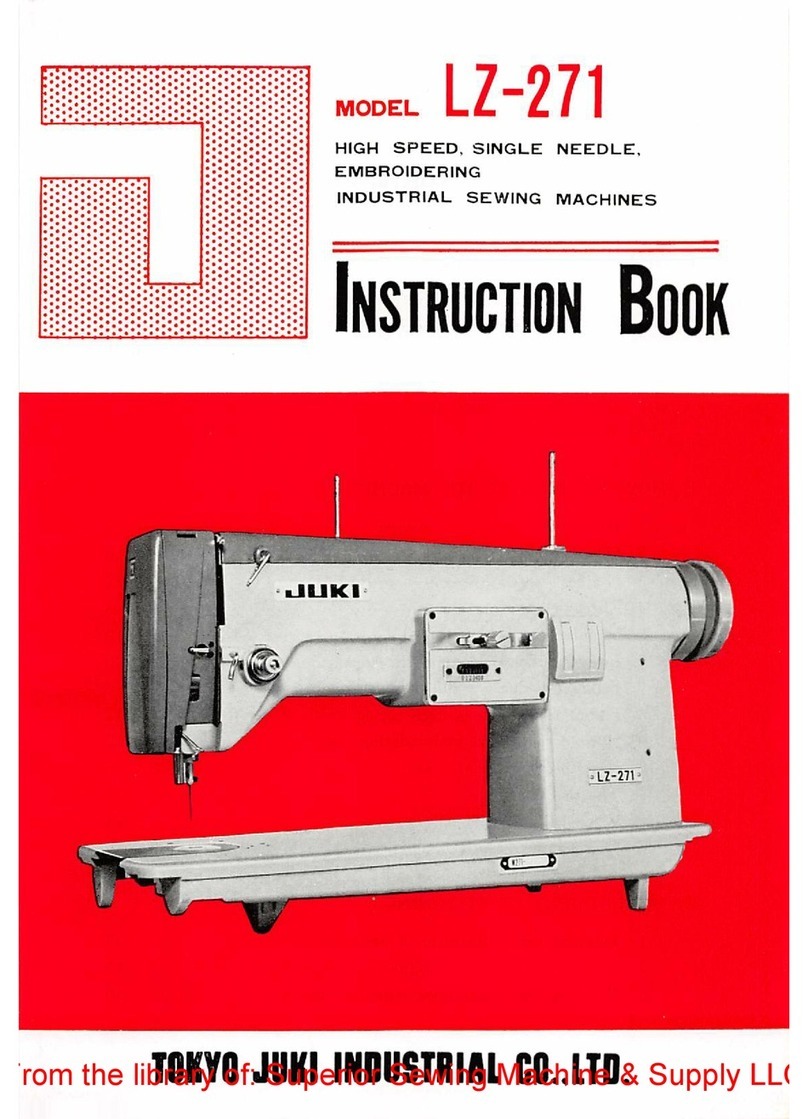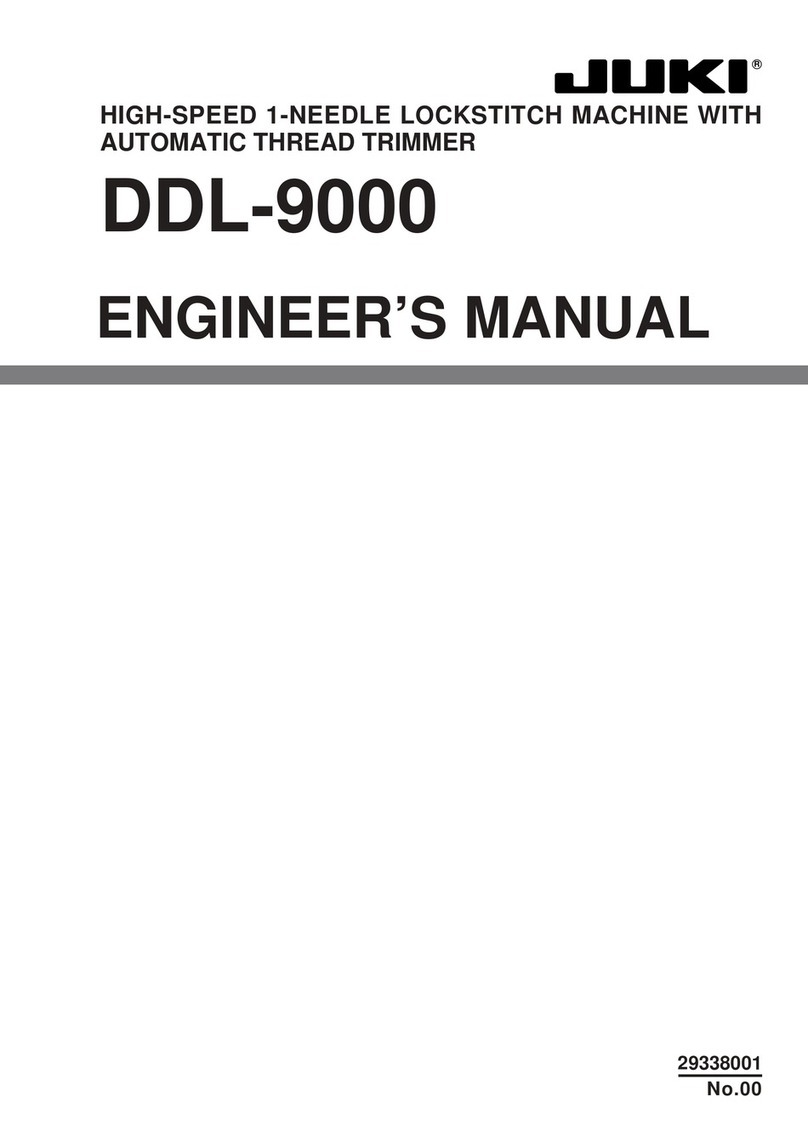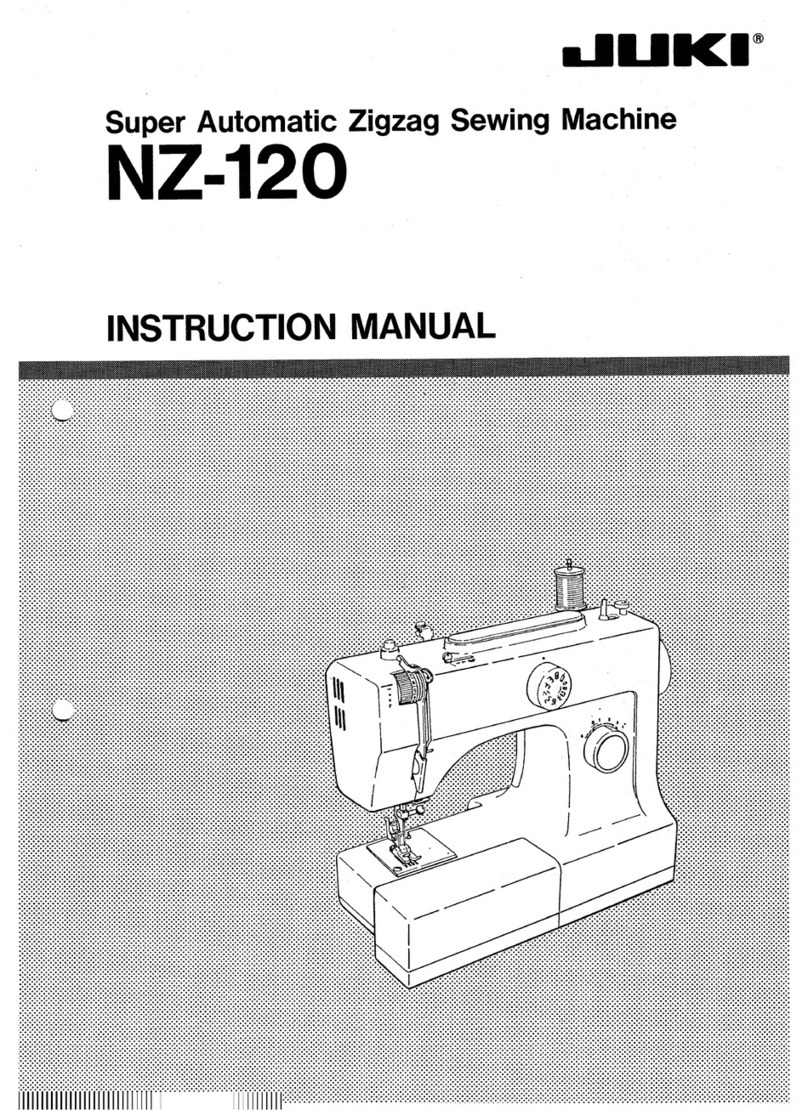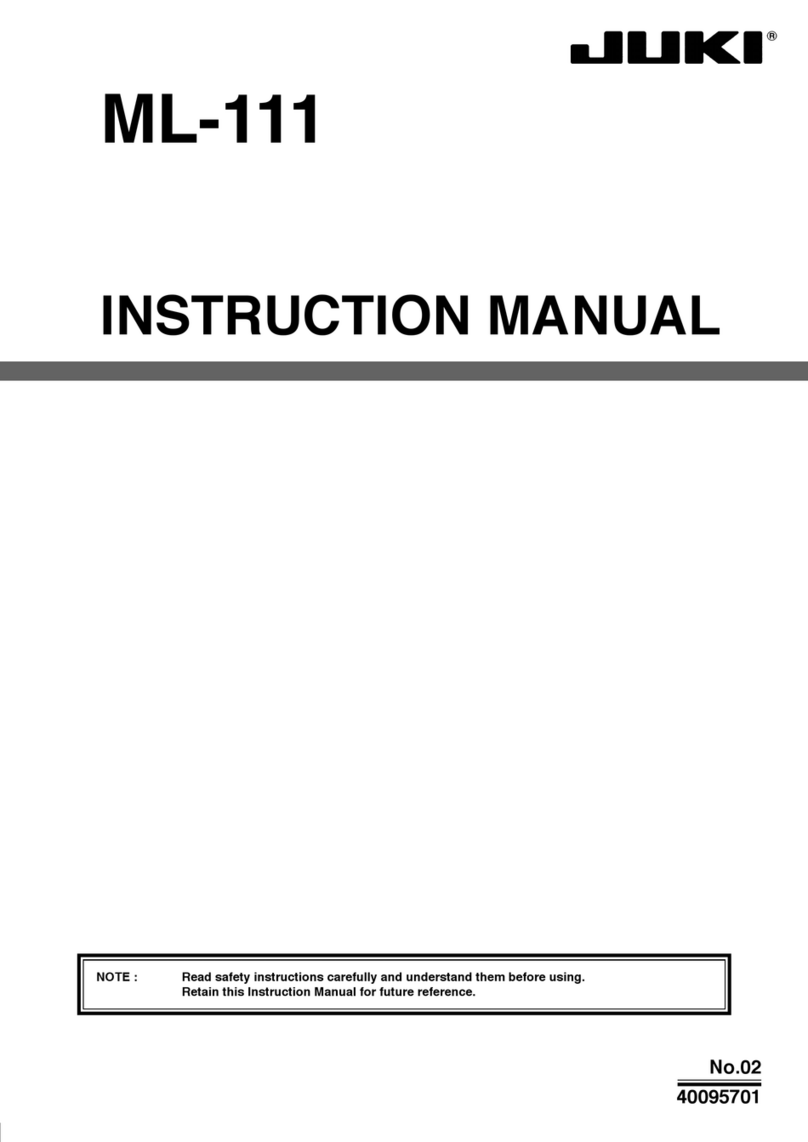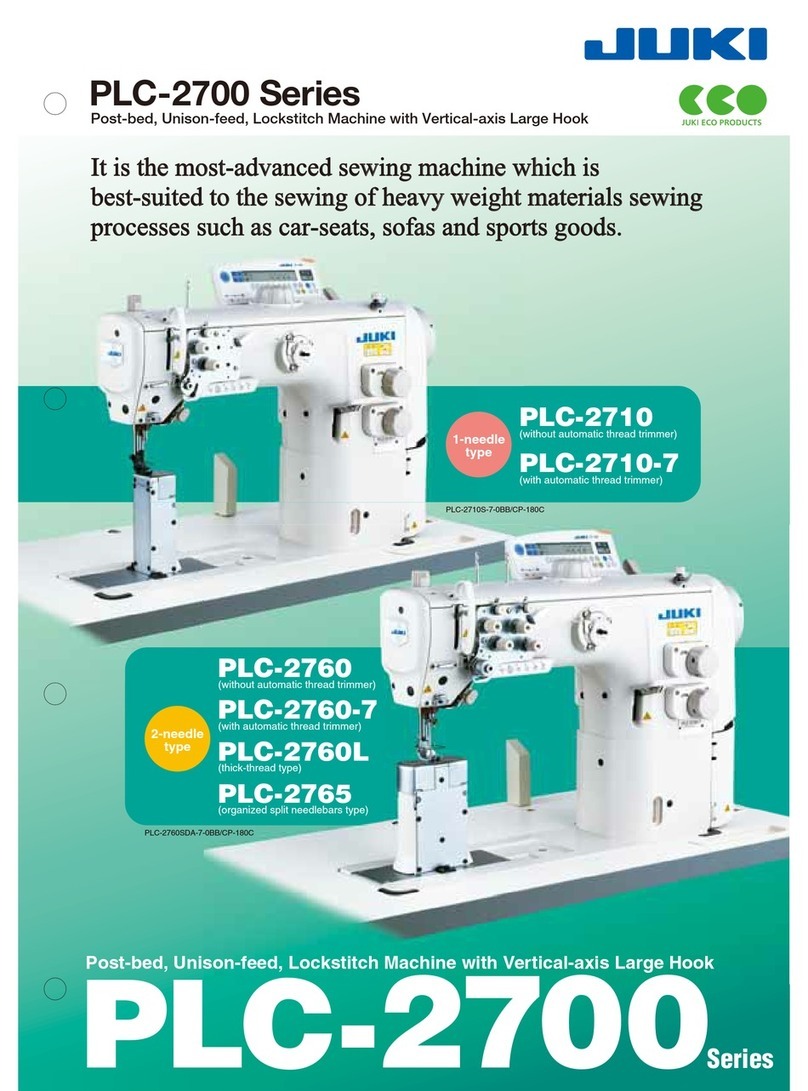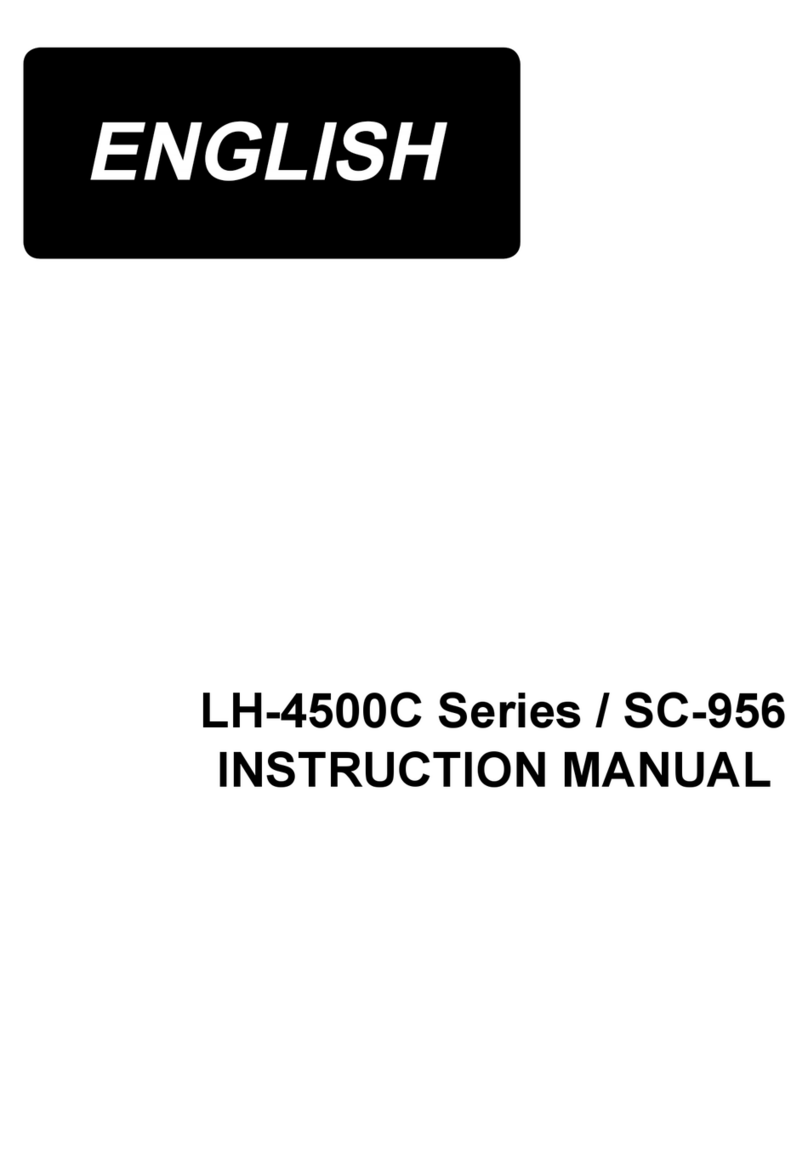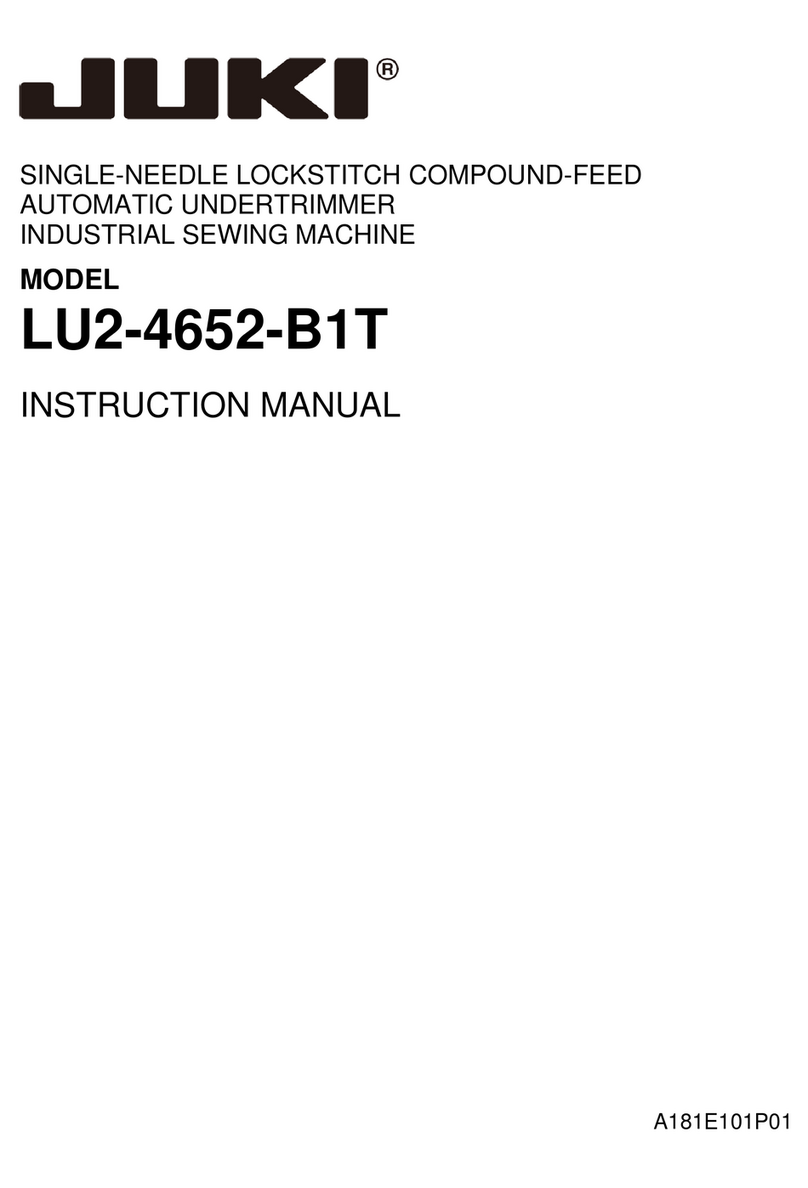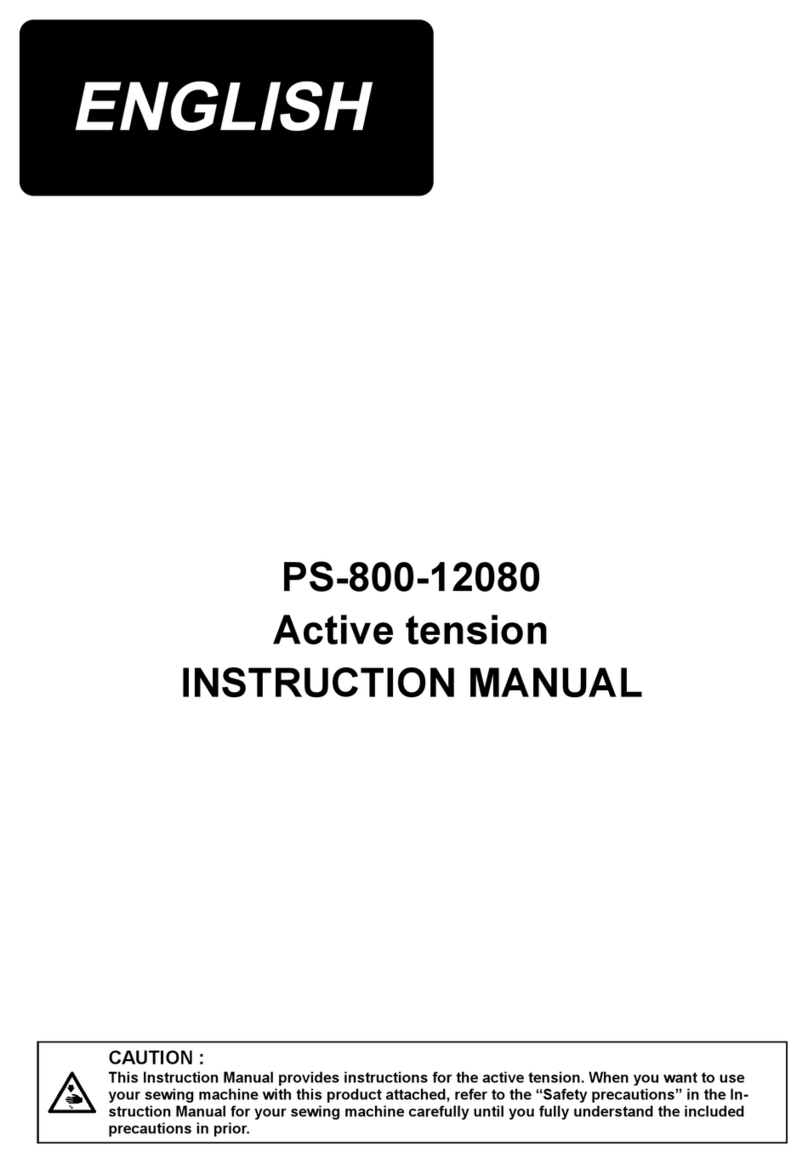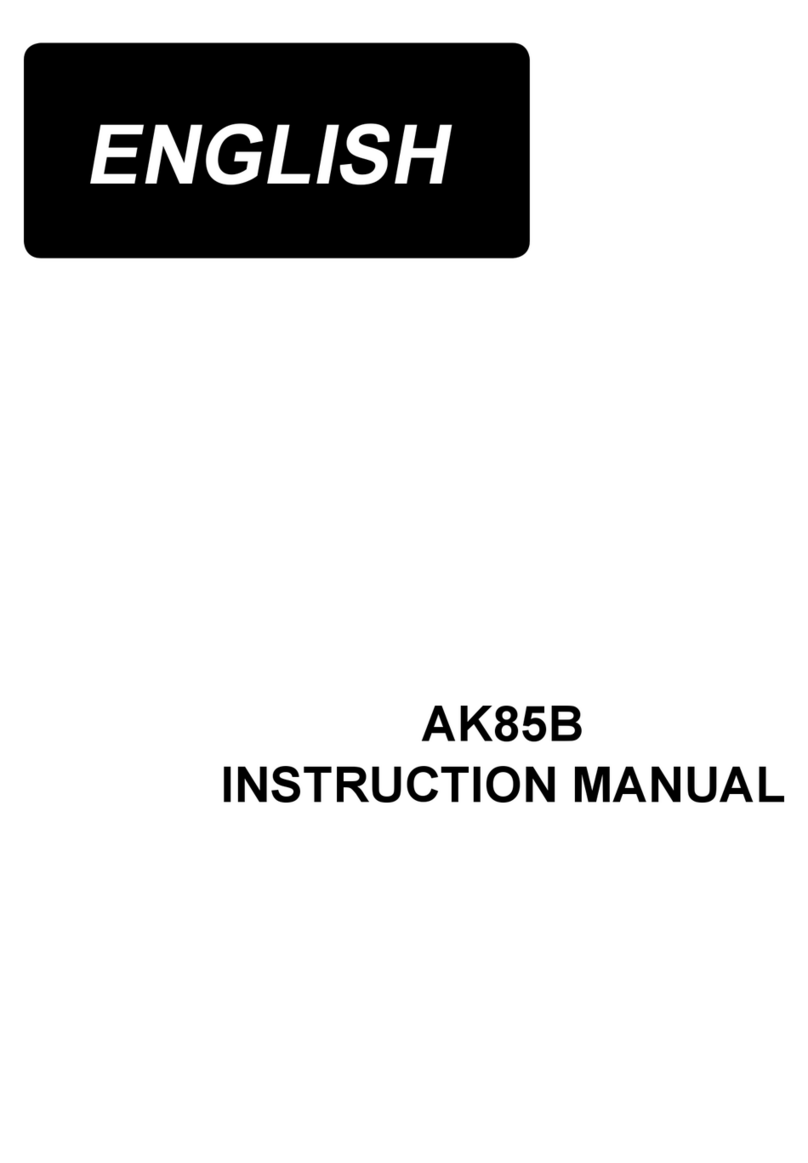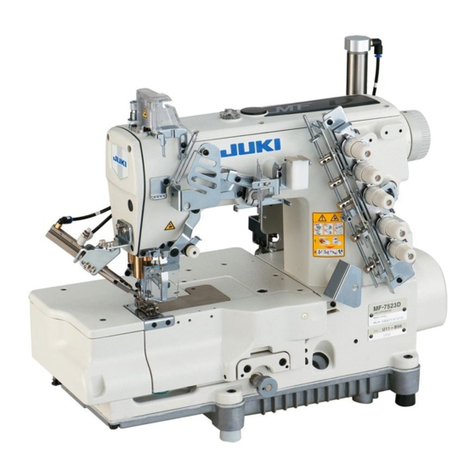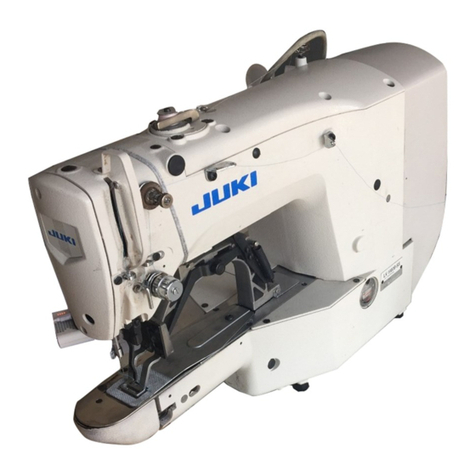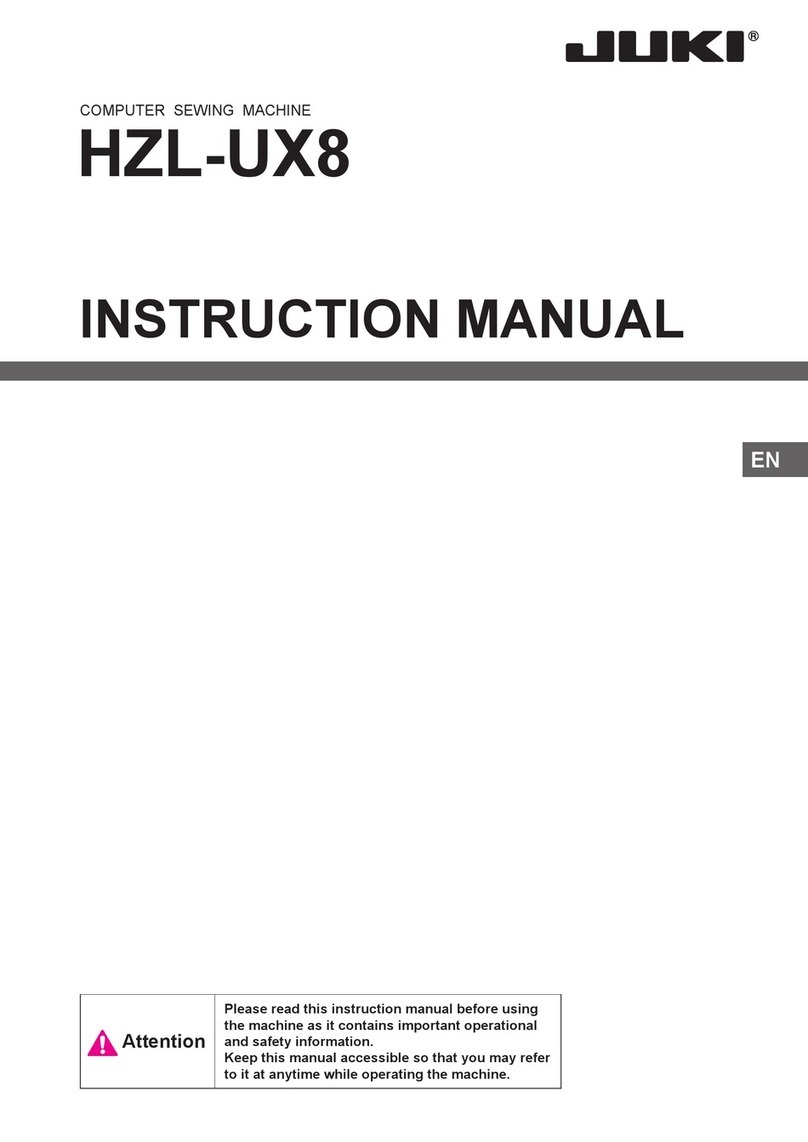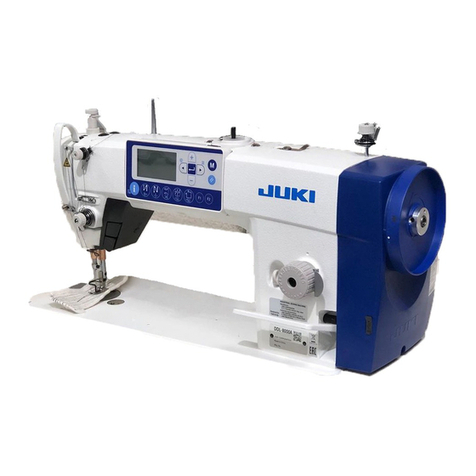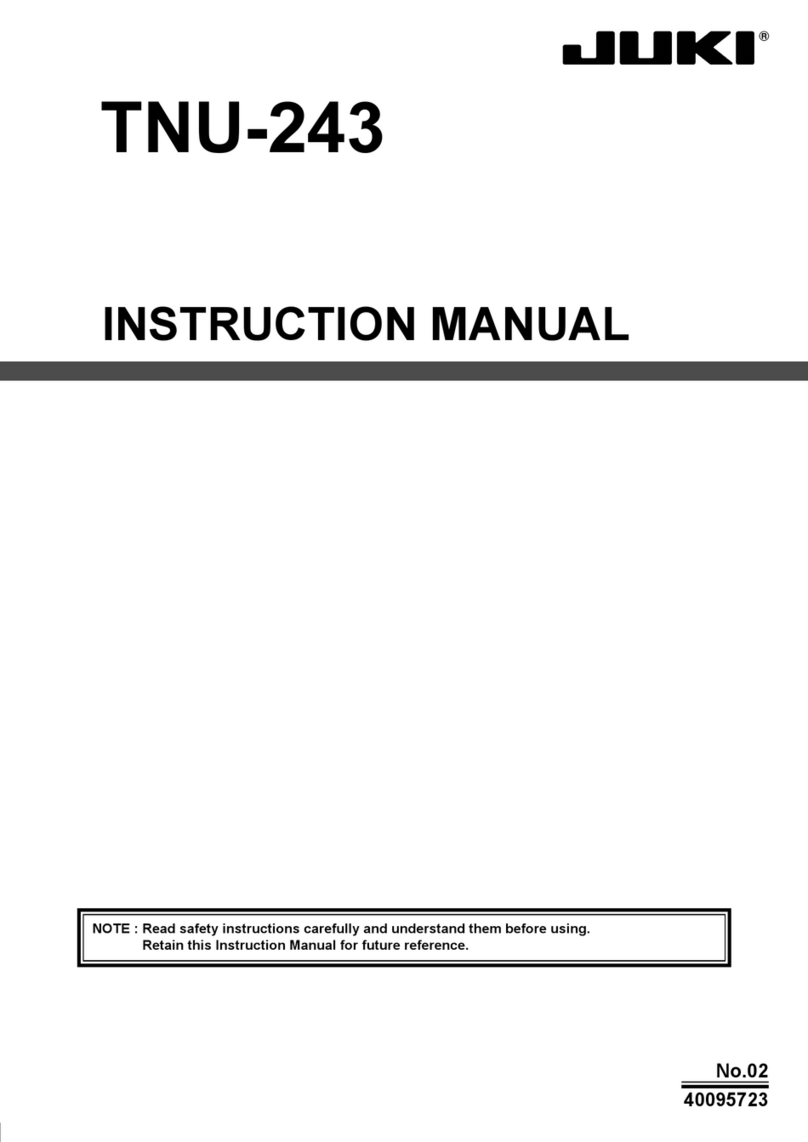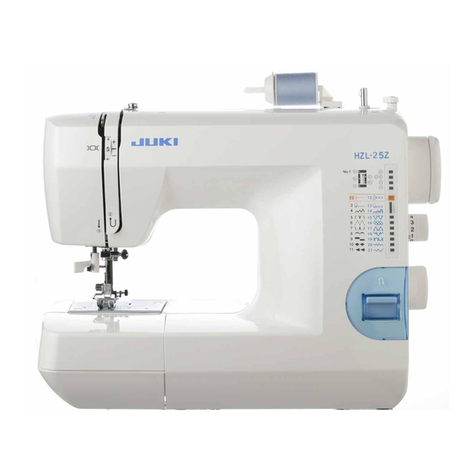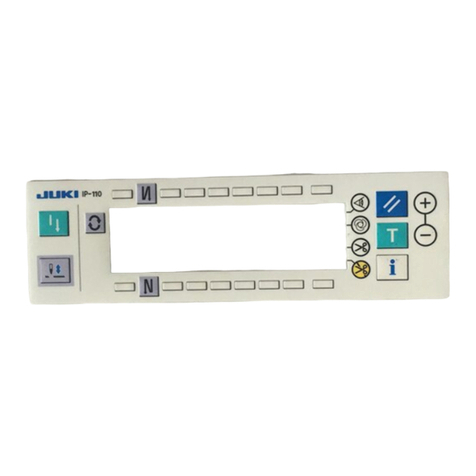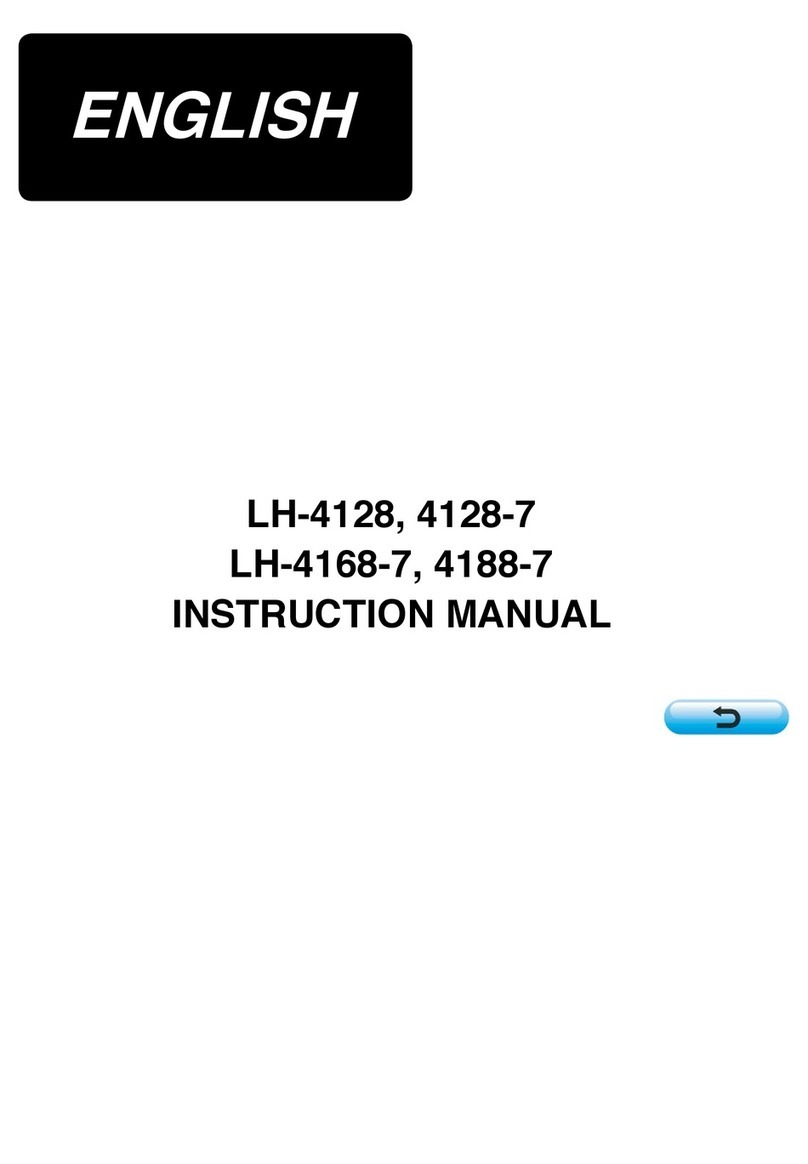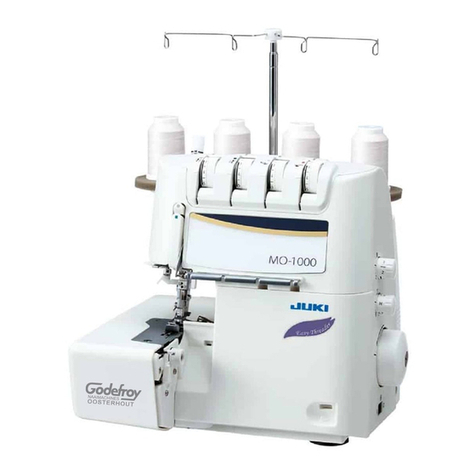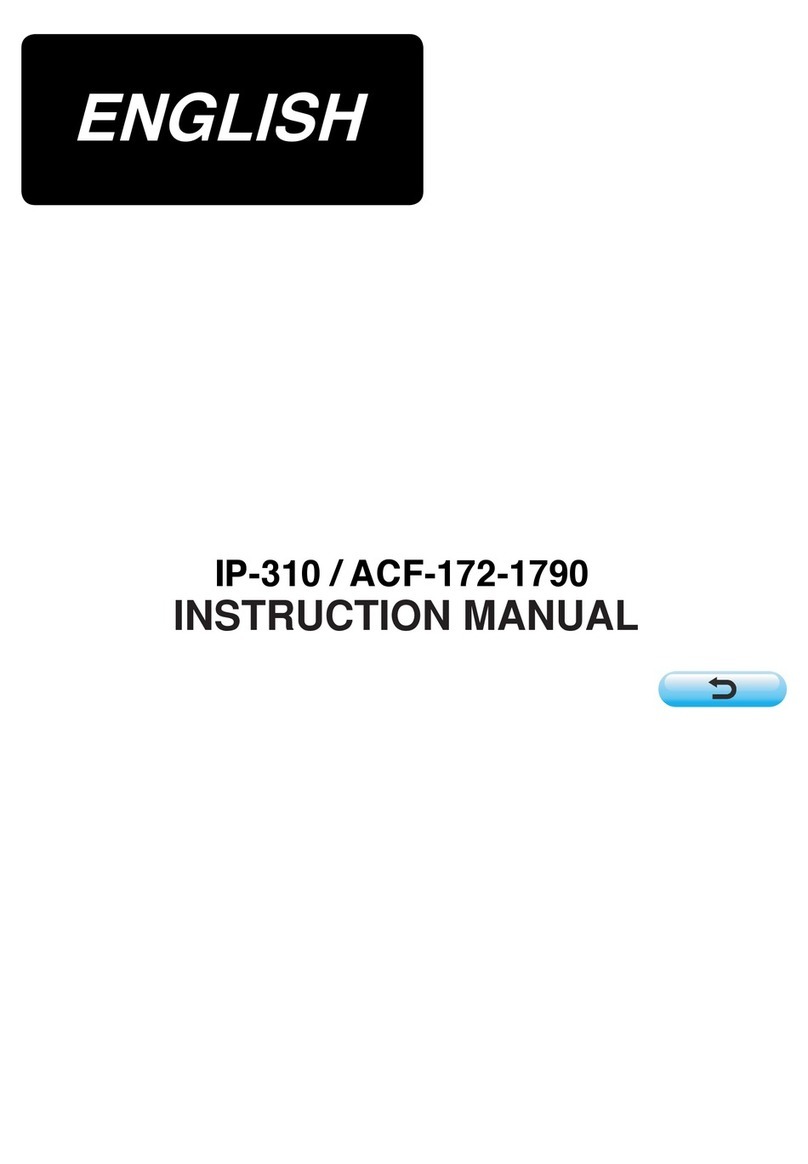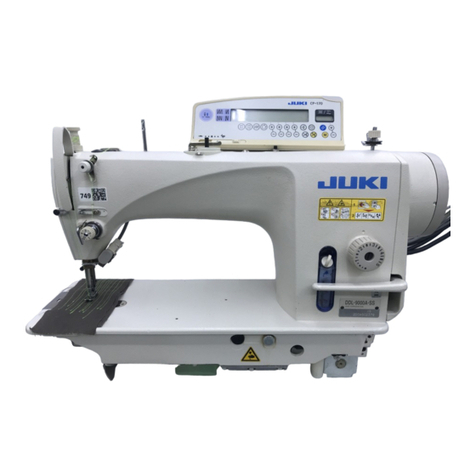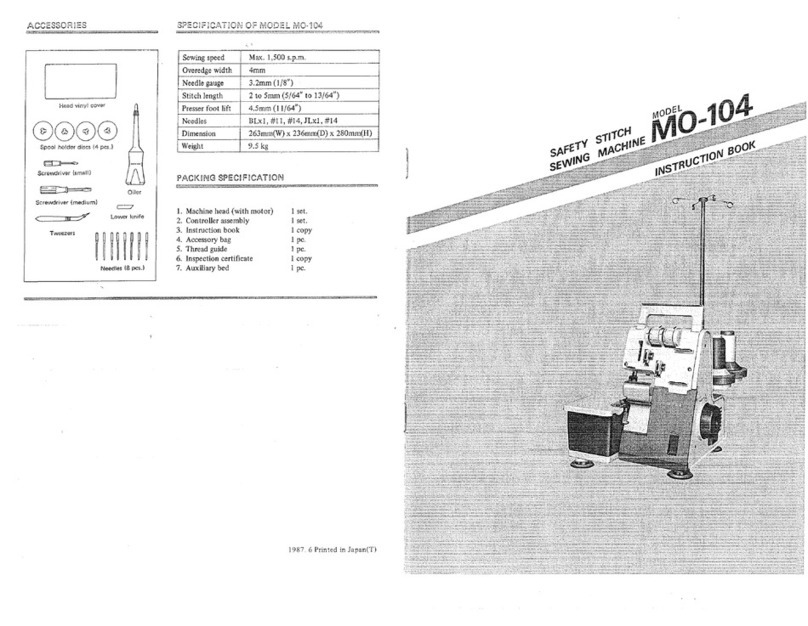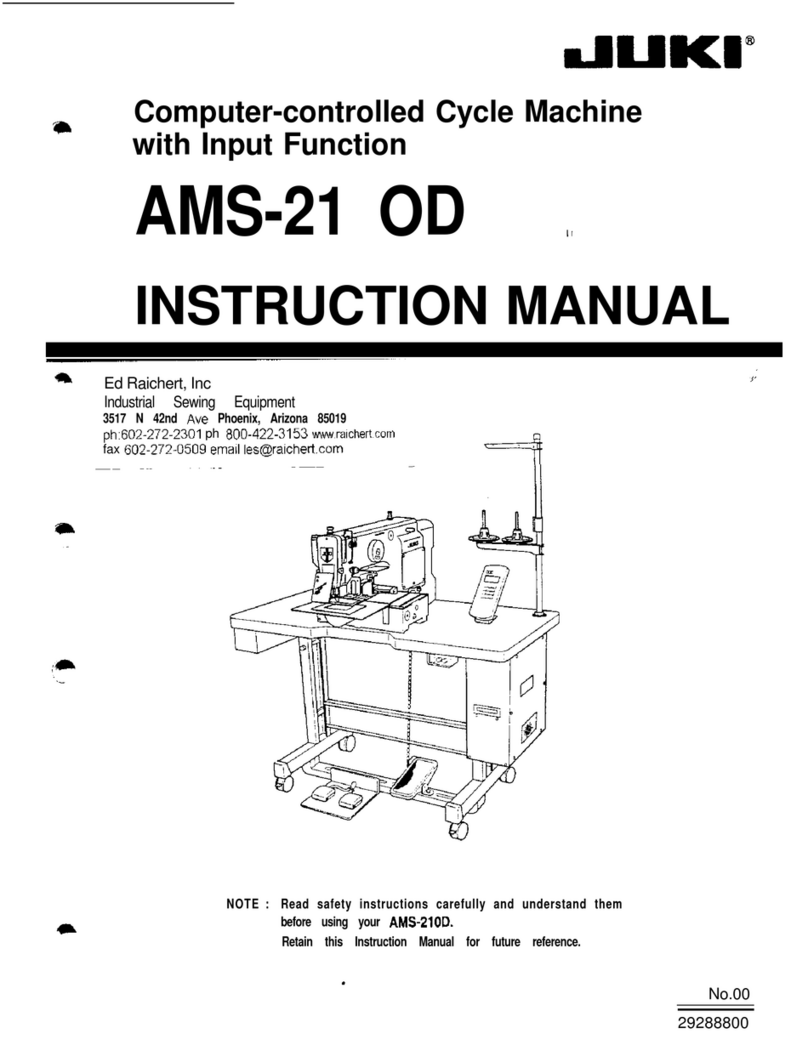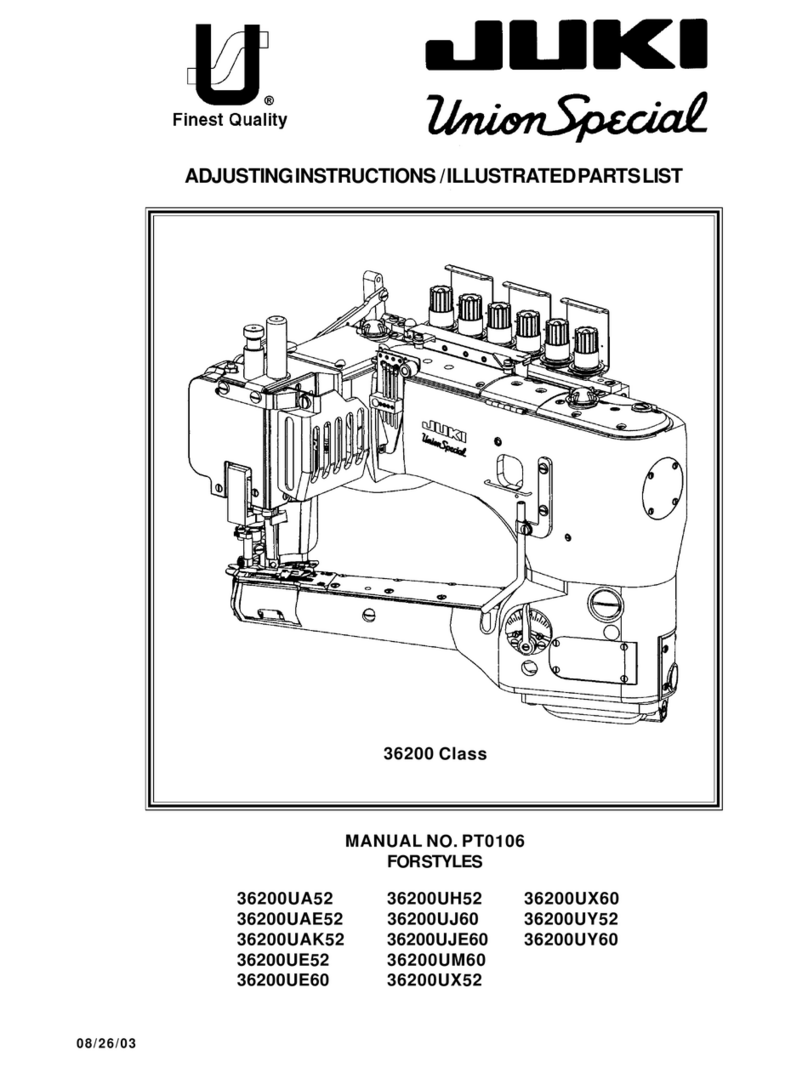CONTENTS
1. SPECIFICATIONS ...................................................................................1
2. STANDARD ADJUSTMENT....................................................................2
(1) Needle entry position .............................................................................................. 2
(2) Longitudinal position of the feed dog ...................................................................... 2
(3) Lateral position of the feed dog .............................................................................. 4
(4) Height of the feed dog ............................................................................................ 4
(5) Adjusting the opener (DNU-1541S) ........................................................................ 6
(6) Needle-to-hook timing............................................................................................. 6
(7) Lift of the presser foot ............................................................................................. 8
1) Hand lifter...................................................................................................................................... 8
2) Knee lifter ...................................................................................................................................... 8
(8) Feed motion.......................................................................................................... 10
1) Amount of alternate vertical movement....................................................................................... 10
2) Alternate momentum................................................................................................................... 12
(9) Feed cam timing ................................................................................................... 12
1) Horizontal feed cam timing.......................................................................................................... 12
2) Top feed cam timing.................................................................................................................... 14
(10) Needle sway (Optional selection only of DNU-1541-7) ........................................ 16
(11) Stitch length of normal/reverse feed ..................................................................... 16
(12) Balancer (DNU-1541, DNU-1541S)...................................................................... 18
(13) Position of the reverse feed control lever ............................................................. 20
(14) Safety clutch (DNU-1541S) .................................................................................. 22
(15) Lubrication ............................................................................................................ 22
3. STANDARD ADJUSTMENT OF THREAD TRIMMER COMPONENTS
(DNU-1541-7) .........................................................................................24
(1) Thread trimmer device.......................................................................................... 24
1) Cam follower ............................................................................................................................... 24
2) Solenoid arm ............................................................................................................................... 24
3) Thread trimmer cam timing ......................................................................................................... 26
4) Rotary knife and fixed knife......................................................................................................... 26
(2) Alternate vertical dial ............................................................................................ 28
(3) Adapting SC-380 to DNU-1541-7 ......................................................................... 30
4. INSTALLATION OF THE OPTIONAL PARTS ......................................32
(1) Automatic reverse feed device ............................................................................. 32
1) Removing the window plate (List of the parts to be removed) .................................................... 32
2) Removing the reverse feed control lever (List of the parts to be removed) ................................ 32
3) Installing the reverse feed link hinge screw (List A) .................................................................... 32
4) Installing the reverse feed control lever1. Reverse feed control lever (List B) ............................ 33
5) Installing the automatic reverse feed device (List C) .................................................................. 33
6) Installing the touch-back switch (List D)...................................................................................... 34
7) Installing the pneumatic components (List E) ............................................................................. 34
8) Parts list ...................................................................................................................................... 34
(2) Automatic presser foot lifter .................................................................................. 36
1) Installing the automatic presser foot lifter (List A) ....................................................................... 36
2) Installing the pneumatic device components .............................................................................. 37
3) Parts list ...................................................................................................................................... 38
(3) Installing the DL device......................................................................................... 40
1) When installing the DL device to DNU-1541-7 after set-up of the machine (List A) ................... 40
2) Installing the pneumatic device components (List B) .................................................................. 40
3) Installing the 5-step switch (List C) ............................................................................................. 40
4) Parts list ...................................................................................................................................... 41
